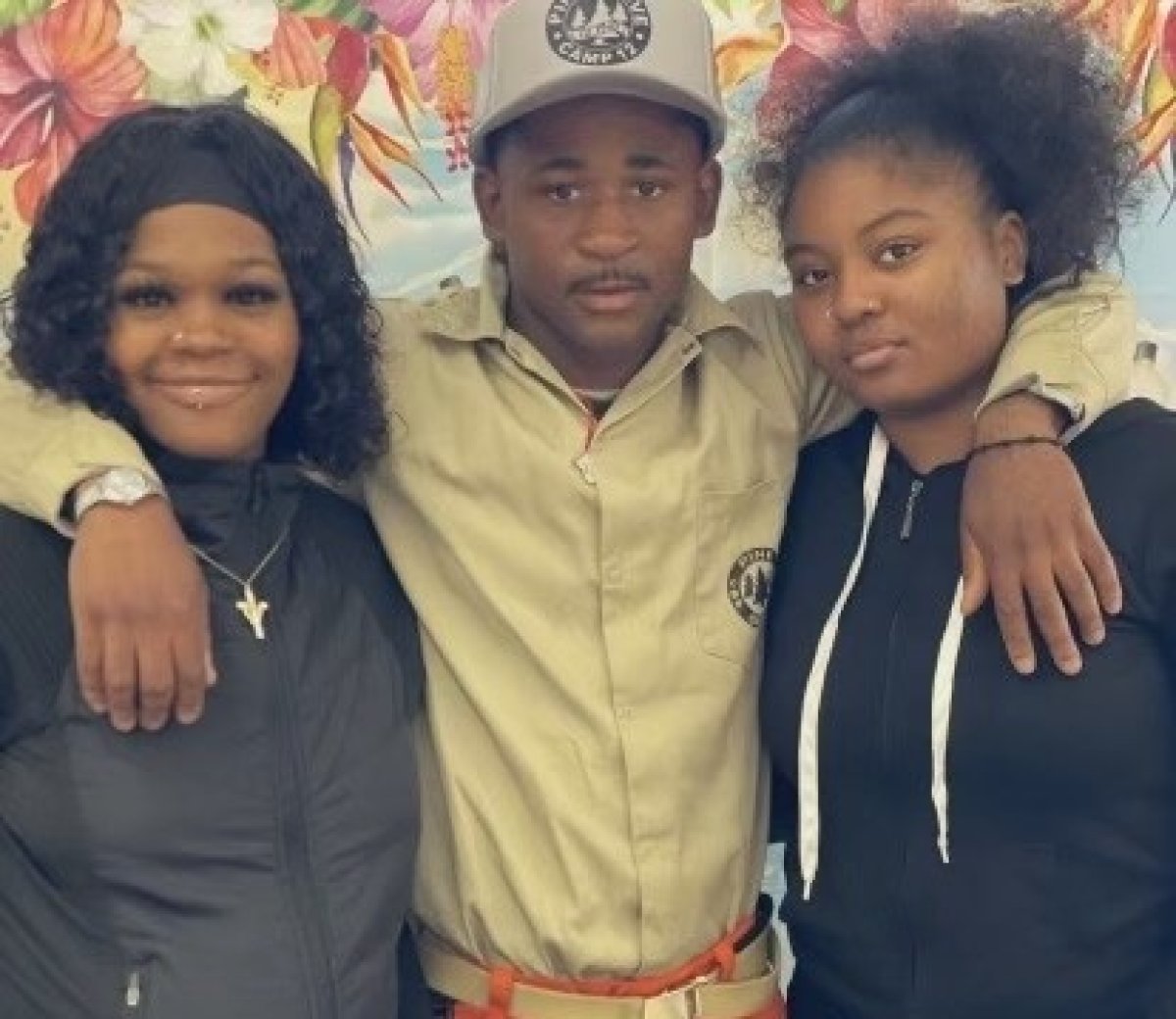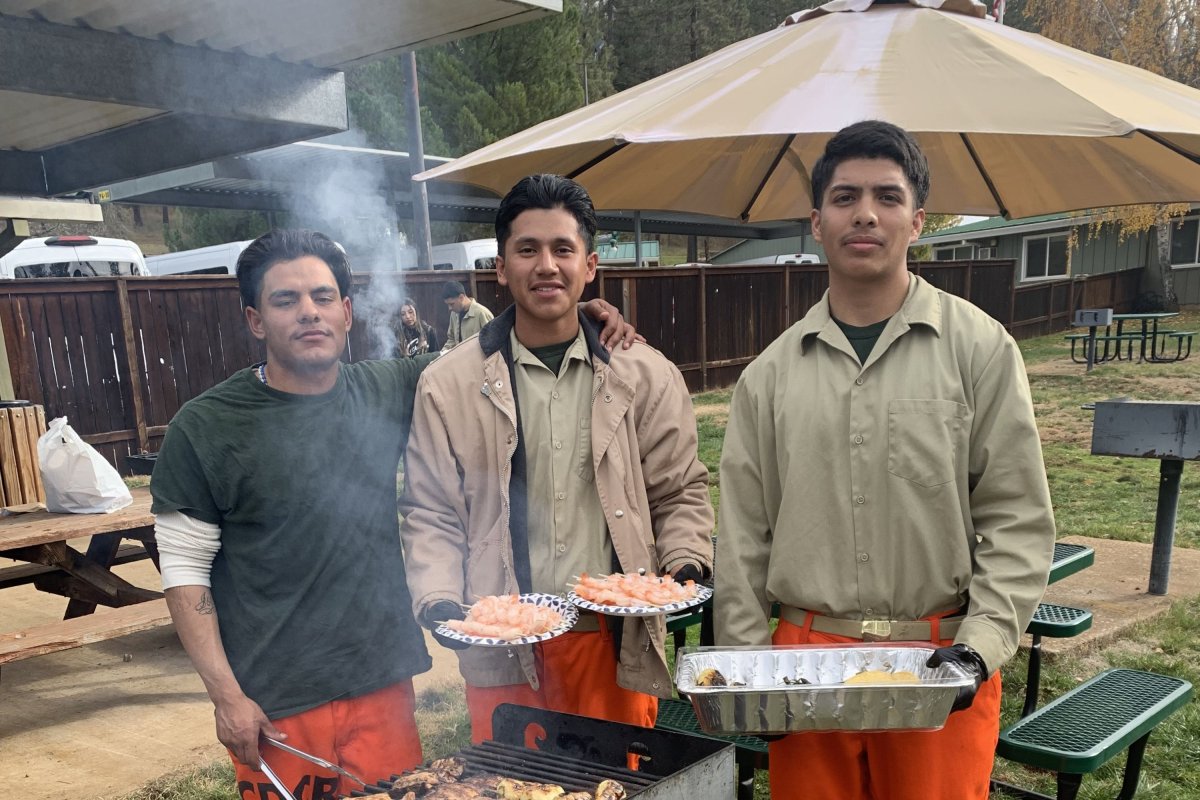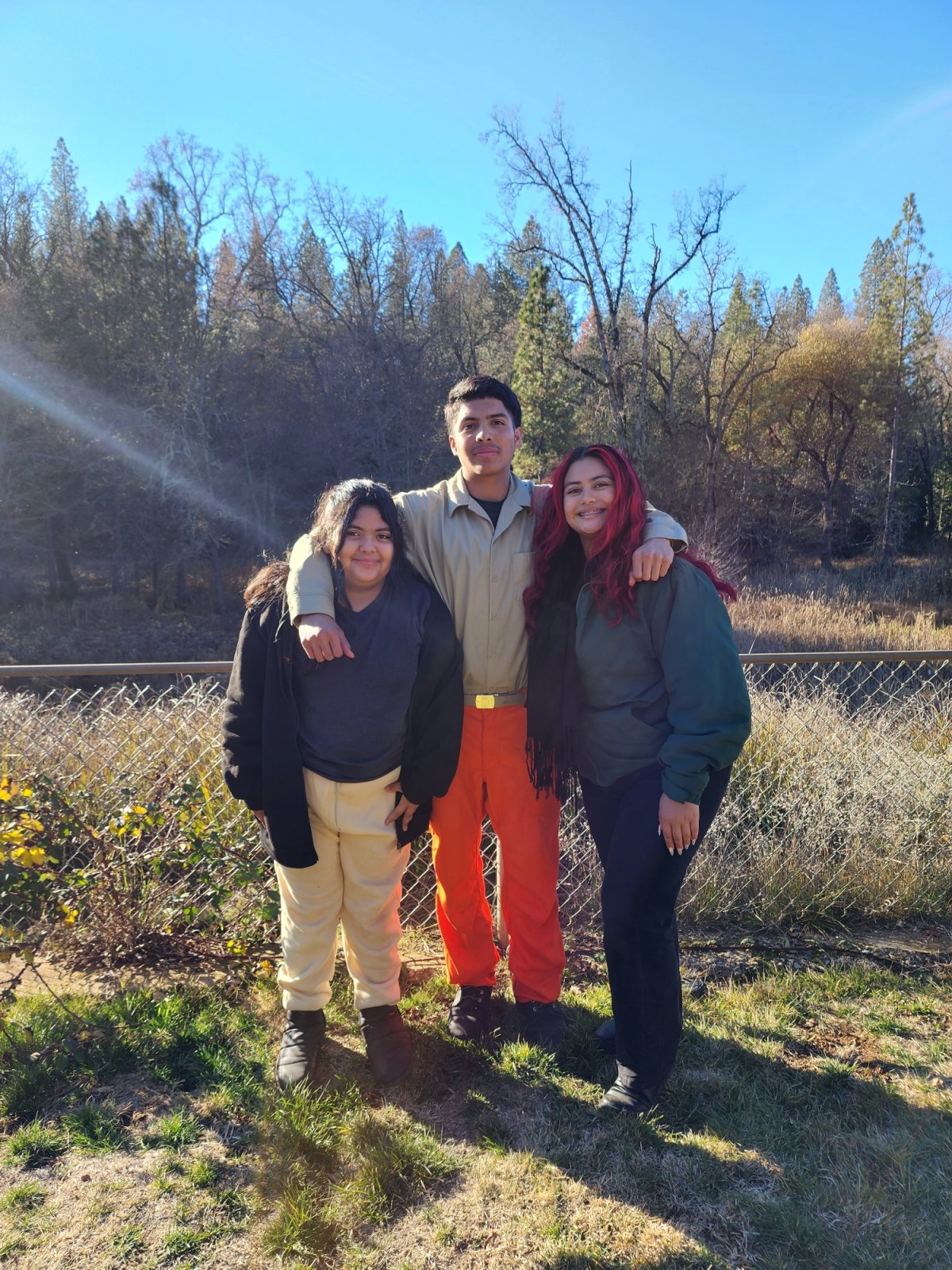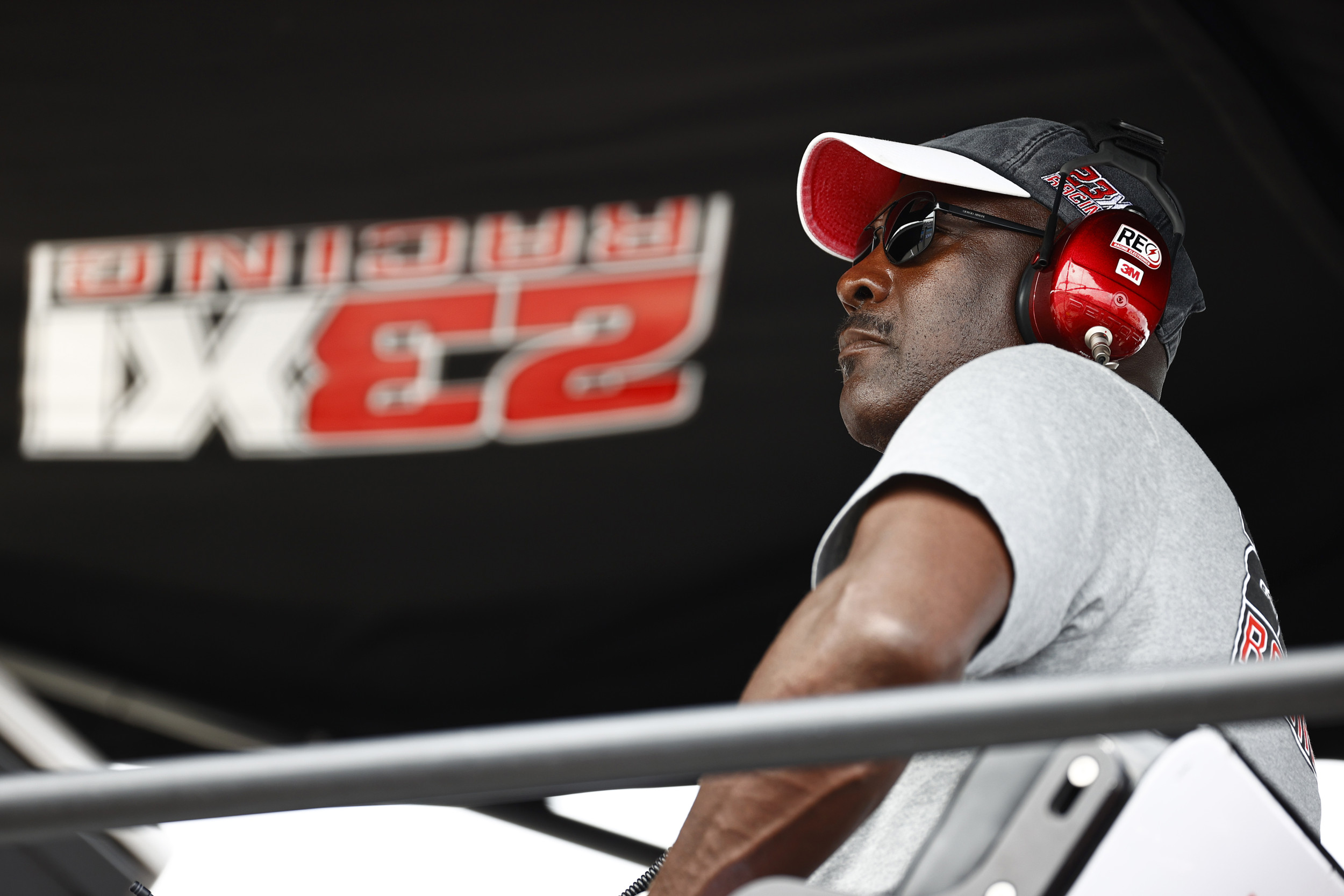Deshaun Curtis-Simmons wanted to become a firefighter since childhood, and now the 22-year-old's dream has come true: He's battling the blazes whipping across the Pacific Palisades, a wealthy neighborhood in the Westside region of Los Angeles.
His route to get there has been unusual. He was convicted of manslaughter at age 16 after being arrested for riding in a car with someone who shot and killed a teenager.
As part of the California Department of Corrections and Rehabilitation's (CDCR's) Fire Camp program, he is now among the roughly 30 percent of firefighters battling the California wildfires who are incarcerated.
Incarcerated people were paid $0.16 to $0.74 per hour, or a maximum of $5.80 to $10.24 per day—a rate that was doubled in 2023. While assigned to an active emergency, incarcerated fire crew members earn an additional $1 per hour paid by CAL FIRE, making up to $26.90 per day during 24-hour shifts, according to the CDCR website.

California has 44 fire camps around the state, which the CDCR operates with the California Department of Forestry and Fire Protection and the Los Angeles County Fire Department. The program was established in 1915, and inmates have been trained at the camps since 1946.
"CDCR Fire Camp Program firefighters are proud to be embedded with CAL FIRE personnel to protect lives, property, and natural resources in Southern California," the agency said in a statement shared with Newsweek. "As of today, 939 Fire Camp firefighters have been working around the clock cutting fire lines and removing fuel from behind structures to slow fire spread, including 110 support staff."
CDCR said they haven't received any reports of injuries to incarcerated firefighters in Southern California.
The program has been hailed for its rehabilitation successes—many leave the program to become firefighters, leaving incarceration and the typical challenges accompanying reentry behind.
But others argue that these firefighters are getting paid slave wages to risk their lives as they attempt to save some of the wealthiest communities in the country.
"If Californians place the responsibility to save people's homes and our shared wilderness on the shoulders of people in prison, they should be willing to pay them the wages that account for the level of risk and responsibility that person is undertaking," said Emily Galvin-Almanza, founder and executive director of Partners for Justice, a nonprofit seeking to improve the public defender system.
Families Speak
Curtis-Simmons was sentenced to juvenile life in prison, which, in California, means he would have been eligible for parole after 25 years of incarceration.
But his mother, Francis Curtis, said that due to his participation in the Fire Camp program, he is expected to be released on March 6. He's already applied for several firefighter jobs when he gets out, and, his mother, added, her son's ready to begin his life anew by helping others.
"It makes my heart happy," she told Newsweek. "I just want him to get even better as a grown man."
That doesn't mean she's unaware of his dangerous work. "It's scary," Curtis said. "I pray for him every night, me and my family. I know he's in good hands. I'm still scared, but with God and all the good firefighters around him, I know he'll be ok. This isn't his first go around."

Shelly Bonilla's son, Nathan Gonzalez, is also fighting the California fires, stationed in Eaton.
Gonzalez was convicted of second-degree murder at age 16. He's now 19. Every six months that he's in the program, he goes to court for a review of his behavior and participation and is granted up to six months off his sentence, his mother said.
"My son has grown a passion for this," Bonilla said, noting he was initially skeptical.
"He loves it," she added. "He loves being able to serve a community wherever they placed him. He loves being able to be a part of something, and getting hands-on training and learning something new, every single day."
Bonilla also worries about her son being on the front lines, because of the danger of the job, and because she fears he could be treated differently than firefighters who aren't incarcerated.
"I feel scared because, to me, he's still a child," she said. "He's 19 years old. I know they go through intense training. But I do feel scared because the wind, the weather, the conditions. Are they being taken care of? Are they eating? Are they as safe as they can be?"
The 13th Amendment
While the 13th Amendment abolished slavery in 1865, it still allows for incarcerated people to be used as labor for public or private enterprises. Seven states have ended forced prison labor: Alabama, Colorado, Nebraska, Oregon, Tennessee, Utah and Vermont.
Roughly two-thirds of the 1.2 million people incarcerated in the U.S. work in the prison system, producing nearly $11 billion in goods and services each year, according to a 2022 study by the American Civil Liberties Union.
Their labor keeps the costs of all kinds of products down for Americans, but often these workers can be exploited and work in treacherous conditions.
The firefighters in the CDCR program take on some of the most dangerous tasks. For example, they don't use water hoses, but chain saws, axes and other tools in attempts to starve the fires on the ground.
The incarcerated people volunteer for the program, however. No one is required to put their life at risk.
But that doesn't mean they shouldn't get paid the same as other firefighters, Galvin-Almanza said.
"Rejecting the legality of slave wages in prison and giving people meaningful pay for their labor whether they are in prison or out isn't just morally the right thing to do, it's also great for public safety, because over 90 percent of people come home from prison, and those who have been able to work and save money to start their life anew will be much more likely to succeed when they come home," she said.

Does Disparity Matter?
Curtis said she's not concerned that her son isn't making as much money as other firefighters who are attempting to save some of the most valuable real estate in the nation.
"This is exactly why he went to fire camp," Curtis said. "Potentially he could help. We don't care if it's the rich or the poor. I don't think he's concerned about that."
Bonilla said that compensation wasn't the first thing on her mind, either, but that her son is risking his life just as much as the non-incarcerated firefighters.
"I know the biggest compensation comes from the Lord and from him being valued as an individual being out there, besides what he's convicted for," she said. "He's making a change and he's putting himself in a vulnerable situation out there. But I understand there are people out there doing the same thing getting paid for risking their lives. I wish he would have that same compensation."




















 English (US) ·
English (US) ·